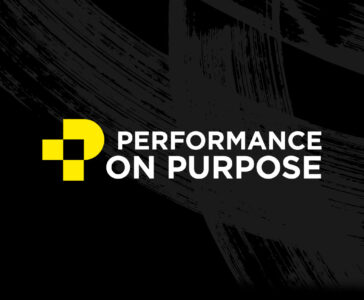In our experience, strategic efforts that produce the most dramatic results share three characteristics: they are meaningful beyond earnings, they exist within a healthy organizational environment, and there are strong relationships within the team leading the effort. I want to spend some time on this third characteristic because we have seen the consequences of leaders assuming a team that has worked together for a period of time (like many leadership teams have) has a good working dynamic.
This assumption can doom an effort before it begins. This article, Three Strategies For Making Your Team Work, by Brett Steenbarger, details three characteristics of high performing professional teams and the importance of intentional team building. As a leader, your responsibility is to prepare your strategy team for the work ahead and to make sure they are set up for success right from the start.
Here are the questions we ask leaders to consider as they design their team and take on initial team-building efforts.
Which voices are needed?
When you consider the scale of the strategic initiative you are undertaking, what perspectives will be vital to include to give it the best chance of delivering expected outcomes? Who on your team, if not included could undermine the effort? If the team you are considering tends to think and act like you, who will challenge the thinking and push to clarify assumptions?
At Fathom, sometimes we keep a member of our team isolated from the day-to-day work for a client so that at key moments we can bring them in to give us objective feedback. For you, think of who the skeptics might be, and include them as part of the team. They often have the ability to see what you can’t and can point out what, if missed, would risk the effort.
Mindset: State the obvious – Find those that think differently – find out what they see
Where will the time come from?
The people who tend to be invited to strategic planning teams are, by their very nature, high-performers. Which means they are already busy, and also most likely to say yes to your request. But, what will participation in this new initiative mean to the other things they are focused on? Since there is only so much time and energy to go around, energy for any new effort will have to come from an initiative already in play.
Having an open dialogue with your team to get clear on expectations around time and energy is critical. Make sure, for each member of the group (including you), that there are understandings and agreements around what it means to your other accountabilities to be involved in this new initiative. Re-prioritization is going to happen anyway, why not do it out in the open so everyone understands where focus will be placed, and where it will be removed.
Mindset: Big rocks – Of all the things I do everyday, what are the three “rocks” that should be never be ignored
Any scars to share?
You can’t re-write your past, but you can use it as a constructive foundation for the future. Is there anything that has happened before that needs to be brought forward for closure, or at least to name, to disempower the “elephant(s) in the room”? Has any member of the team experienced something, either within the organization or with specific members of the group, that if not addressed would compromise their ability to be fully committed?
For many of us, experiences of the past give us a “proceed with caution” attitude, or worse, cause us to assume things will never change. Meet with each member of your team one-on-one and share what you have experienced that could compromise the initiative and find out what stands in their way. Then as a group, put all of those things on the table (stripped of specifics that would implicate individuals) so that you can have an open and objective conversation about how best to move forward in a way that builds from, and doesn’t suppress, what’s happened before.
Mindset: So what, now what – Don’t spend time on how things came to be, only spend time on what you will build from where you stand
[tweetshare tweet=”So what, now what? – Don’t spend time on how things came to be, only spend time on what you will build from where you stand. #influencers #leadership” username=”FathomFutures”]
Which habits are our allies or our enemies?
We have a client who is a master at facilitating complex meetings with large remote teams. Watching it happen is a sight to behold. When appropriate, they can also focus solely on tactical execution. Both are good habits they have intentionally developed that can be called on at a moment’s notice.
When we meet new clients and ask them about past strategic plans, the most common response is that they have one. And when we ask what difference it has made, we regularly hear that it hasn’t left the bookshelf it was put on. If that is true for your organization, it’s worth examining what went wrong. What behaviors are your organization fully reliable for? Good or bad, get them all out in the open. Then, identify the ones you want to rely on, and the ones you need to develop or eliminate. (A common habit in the strategy process itself is for the team to fall back into the concreteness of planning when the unknowns of strategy become uncomfortable. Read more about the differences here.)
Mindset: Make the right habits the habit – Assemble a recipe of behaviors that will set you up for success, some you know, some you’ll need to grow, and make them so.
Read our full strategy guide for leaders and teams
Make sure your strategy team is set up to succeed right from the start. This guide takes you through a set of principles and practices designed to help leaders and their organizations create strategies that move them toward the future they want to see.
Read the guideWhat do we need for ourselves and each other to be at our best?
The best strategic plans point to destinations we don’t yet know how to get to and expose areas that people will need to develop to traverse this new terrain. Meaning, it will take personal and professional development to be successful. This will be particularly important for you to consider as the leader of the initiative.
As you prepare your strategy team, be open and honest with them about what you are working on in your own development. Discuss what you are investing in to help you (coaching, leadership development). And make explicit requests of your team for what they can do, or call you out on, to improve on your developmental journey. Now that you have set the example ask the same of your team.
Mindset: If I don’t grow, we don’t grow – If you already know what to do, then your strategy won’t result in progress, only stasis.
What is your warning signal?
When you get to the part of your journey when the going is tough, and the outcome less than clear, these are the times you are most vulnerable to failure. Careful attention needs to be paid to staying focused and energized. At an early stage, identify with your team the signs that would signify that energy and enthusiasm are waning. Then, agree to a signal that any member of the team can use to call attention to the threat and that mandates a response from the team. Whether it is consistently lower meeting attendance or increasing instances of unfulfilled commitments, be aware of the signs of falling energy. This is the time to reexamine the topics above and see what has changed or has been forgotten.
Mindset: Its dark in the bottom of the trough – What will we do to re-lite the fire when the lights go out?
Want more from Fathom?
Sign up to receive updates about our articles.


